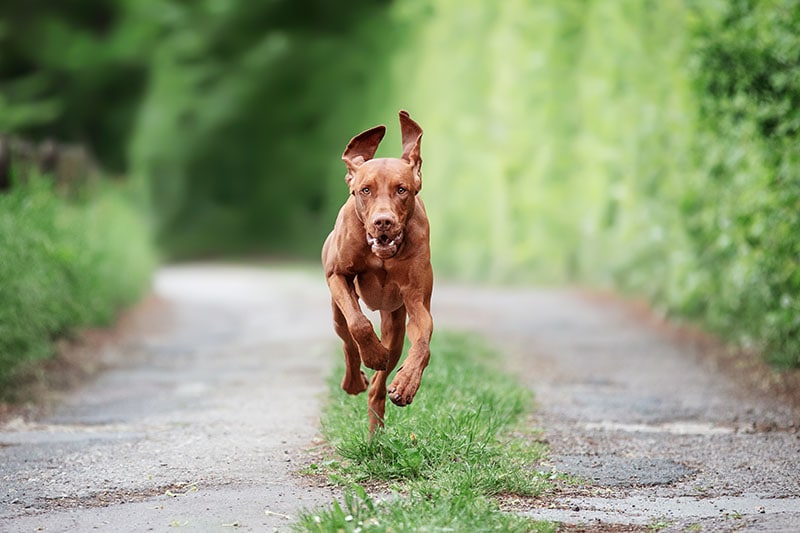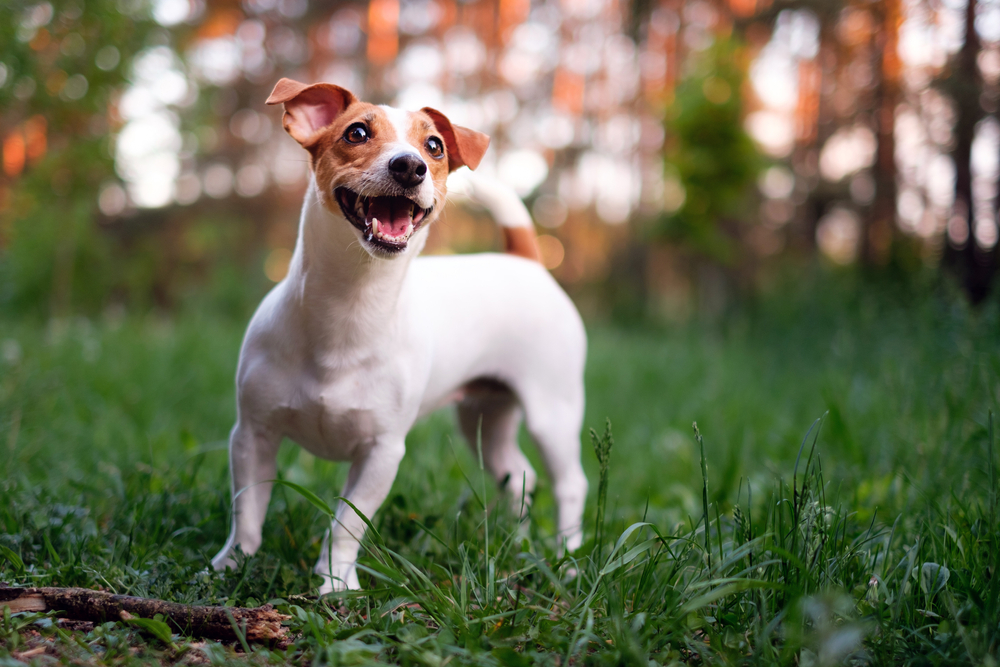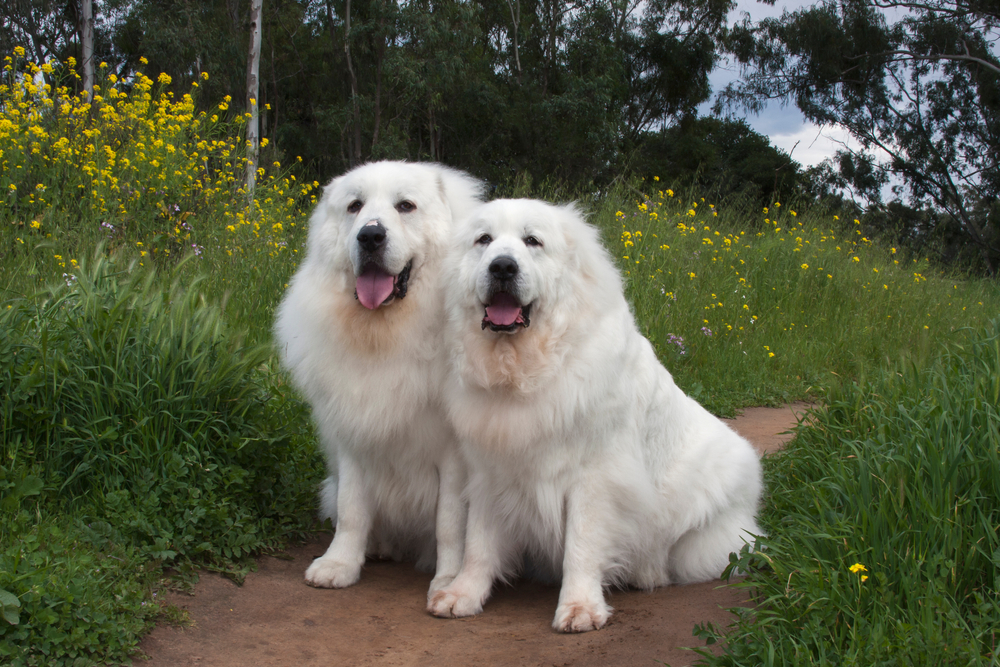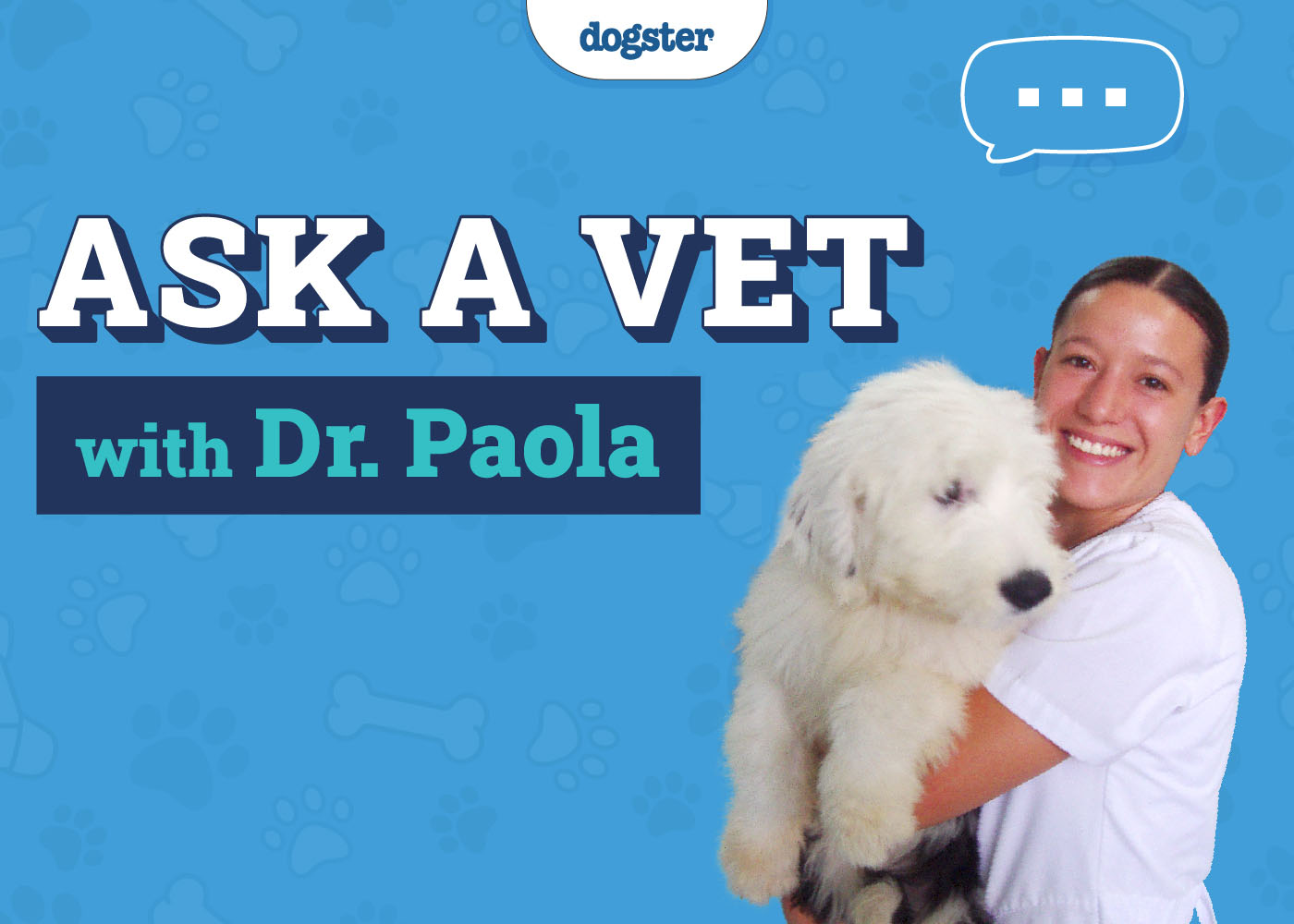Click to Skip Ahead
The Vizsla is a medium-sized breed that originated in Hungary and has a long, fascinating history. They are a friendly canine that loves to burn off their energy outside, such as by jogging with their owner.
Vizslas are intelligent, loving, and active companions—this breed is not known for aggression. They generally do not display dominance and will not attempt to dominate other dogs or humans. However, they still have the propensity to test the boundaries of what they can get away with due to their intelligence. For more information on how these dogs behave, keep reading.
About the Vizsla
The Vizsla is a versatile gundog with a red coat that is ideal for many hours in the field. These rugged but graceful athletes have been the pride of Hungarian sportsmen for decades, and their recognition in America is growing every year.
The sleek golden-rust coat of Vizslas makes them immediately recognizable. They can reach a height of 21 to 24 inches at the shoulder and are lean and agile. Their long, silky ears create loving and sensitive facial expressions when around the family.
Vizslas build strong bonds with their owners and dislike being left alone because they are a working breed that needs to interact closely with people. They are talented athletes that excel in a range of sports and activities. These canines are also graceful and enthusiastic animals with remarkable endurance, making them excellent running or cycling partners.
Vizslas are known as cheerful, kind, and warmhearted dogs with above-average learning capacity and a great desire to be around people. They have a reputation for being docile, but some Vizslas can be easily excitable, stubborn, or even shy. Vizslas are active and athletic dogs, so they can get destructive if bored and left alone for a long time.

Possible Reasons a Vizsla Behaves Aggressively
Actions associated with an attack or an impending attack are considered aggressive behaviors in dogs. These involve snarling, growling, baring teeth, lunging, becoming still and rigid, nipping, and biting.
Aggression in dogs can be driven by fear, a desire to hunt, socialization problems, and territorial guarding, among other reasons. A Vizsla usually only becomes hostile if they perceive a threat to their family. Sometimes, these canines might become overprotective since they are very attached to their people. Fortunately, this tendency can be controlled with proper training.
The 4 Ways to Handle an Aggressive Vizsla
Here is a checklist of actions you can take to start handling your dog’s aggression issues. It will require patience, perseverance, and perhaps even expert assistance.
1. Visit a Veterinarian
Dogs that rarely exhibit violent behavior but do so abruptly might be suffering from a medical condition. Painful injuries, hypothyroidism, and neurological conditions like epilepsy, encephalitis, and brain tumors are among the health issues that may lead to aggression. You may need to talk to your vet to find out if this is the situation with your Vizsla.
If you need to speak with a vet but can’t get to one, head over to PangoVet. It’s an online service where you can talk to a vet online and get the personalized advice you need for your pet — all at an affordable price!
2. Ask an Expert
An animal behaviorist or qualified dog trainer may be able to help if your veterinarian has ruled out a medical issue. An expert can assist you in identifying the root of your dog’s bad behavior and creating a strategy to manage it. Seek a referral from your vet, or contact the Association of Professional Dog Trainers to help you find a good trainer or behaviorist.
3. Develop a Plan
You can choose the most effective strategy for controlling your Vizsla’s aggression with the help of a behaviorist or trainer. For most circumstances, positive reinforcement is generally recognized as the most effective method.

4. Avoid Punishment
When you punish your dog for aggression, it frequently backfires and makes aggression worse. Growling canines could feel the need to defend themselves by biting you if you hit, yell at, or otherwise use an unpleasant technique to deal with them.
Punishment might also cause your Vizsla to bite another person suddenly. For instance, a dog that growls at kids might only be trying to tell you they feel uneasy around them. If you penalize your furry friend for this behavior, they may not warn you the next time they feel uneasy—instead, they might just bite.
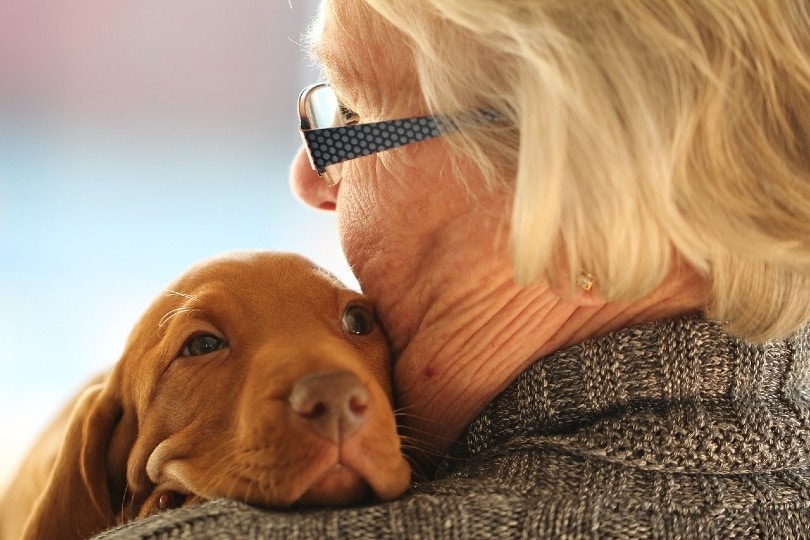
Is the Vizsla a Good Family Dog?
Generally, Vizslas are great family pets for active households. When bringing a Vizsla home, owners must be ready to give them at least an hour of daily activity. They are dependable, hard-working animals that are happiest when given a task.
These loyal pups make excellent watchdogs thanks to their sharp senses. While they can play with older kids for hours without getting tired, they tend to be too much for toddlers. Due to their love of running around, they are most suitable for a home with a big yard.
Conclusion
In most cases, Vizslas are not aggressive dogs. On the contrary, they are incredibly affectionate animals if they receive the proper care, upbringing, socialization, and training. If you are looking for a beautiful Vizsla, be aware that the breed requires a daily commitment to intense exercise and attention. Lastly, it’s crucial to do your research and find a reputable breeder before purchasing any dog.
Featured Image Credit: Bianca Pinkernell, Shutterstock

